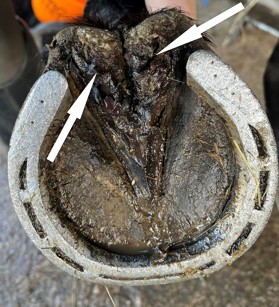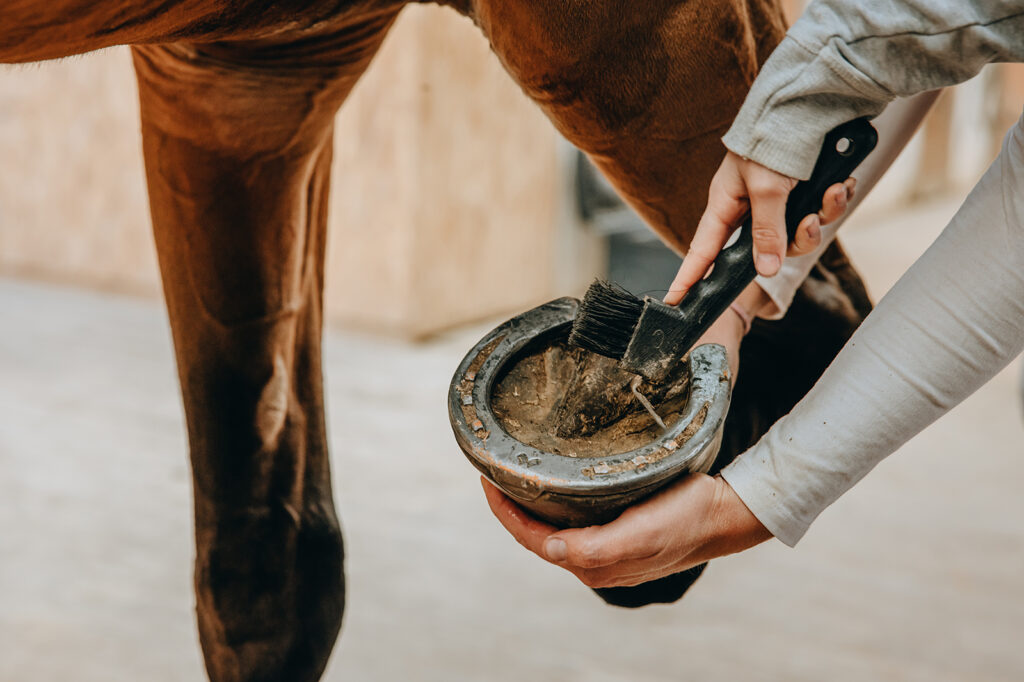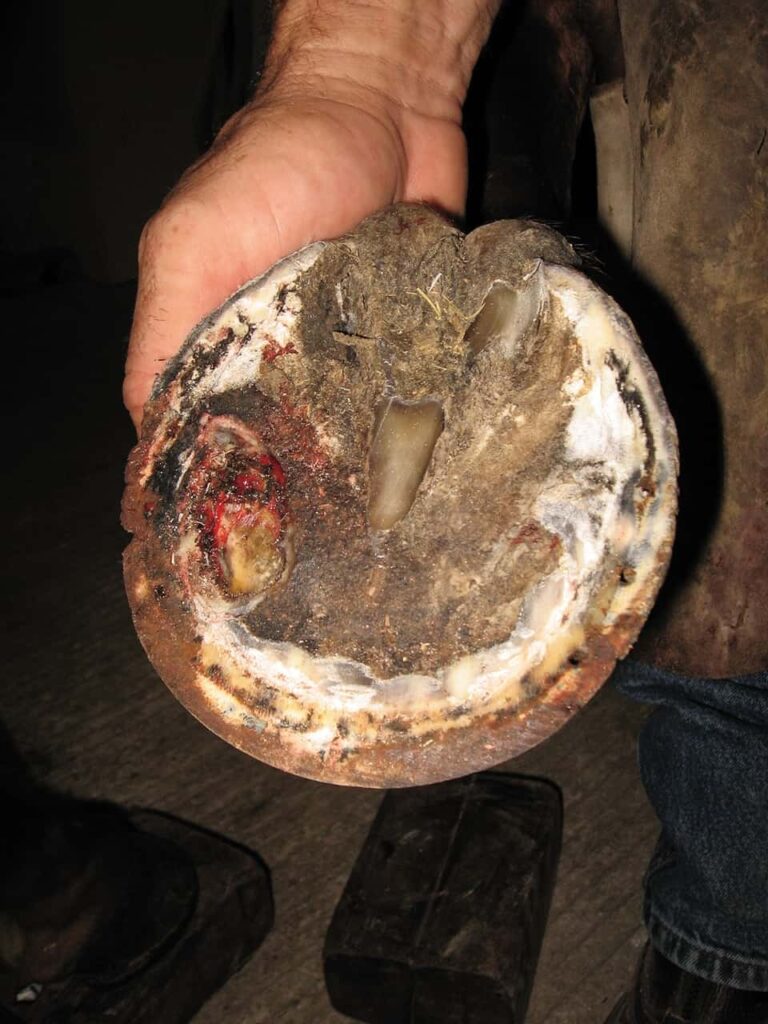
1️⃣ Why cleaning hooves is important:
- Rocks, mud, and debris easily get trapped in the grooves (frog, sole) of the hoof.
- Trapped rocks can bruise the sole or cause pressure necrosis if left.
- Wet, dirty hooves create a perfect environment for bacteria.

2️⃣ What infections can occur?
- Thrush: foul-smelling black discharge in the frog area due to anaerobic bacteria (often from wet, dirty conditions).
- White Line Disease: separation of the hoof wall allowing infection.
- Abscesses: infection trapped inside the hoof, causing sudden severe lameness.
- Bruises: while not infections, trapped rocks can cause bruises that lead to secondary abscesses.

3️⃣ Signs of infection:
✅ Heat in the hoof
✅ Swelling above the hoof (pastern or fetlock)
✅ Lameness (mild to non-weight-bearing)
✅ Foul odor or black discharge
✅ Sensitivity to hoof testers or when picking hooves
4️⃣ How to clean hooves properly:
- Use a hoof pick daily (or before/after every ride).
- Remove all rocks, dirt, and manure from the grooves beside the frog.
- Check for embedded stones in the white line and sole.
- If the hoof is wet, dry it, and apply a hoof conditioner if needed.
- Check for odor, discharge, or tender spots.

5️⃣ When to call a vet or farrier:
- Persistent or severe lameness.
- Swelling or drainage from the coronary band (possible abscess rupture).
- Deep cracks or holes after rock removal.
- Signs of systemic illness (fever, lethargy).

6️⃣ Prevention:
✅ Regular hoof cleaning and inspection.
✅ Keep stalls dry and clean.
✅ Schedule regular farrier trims (4–8 weeks) to prevent cracks and imbalances.
✅ Use hoof boots if riding in rocky areas.
If your horse has a rock stuck that caused bleeding or a deep puncture, this can lead to serious infection (like septic pedal osteitis or joint infections) and should be evaluated immediately by your vet.
If you want, I can also prepare a hoof cleaning checklist or visual guide for you to use in your barn to help prevent rock-related hoof infections. Let me know if you would like that.